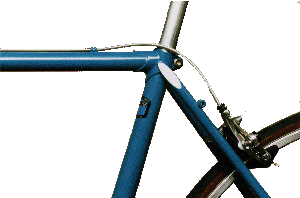Originally Posted by
Winfried
Thanks everyone for the infos.
"As the cable pulls against the housing the arms are drawn together." (
Source).
So, it looks this is how the magic happens: 1) the housing is incompressible, 2) pulling the lever pulls the inner cable which pushes against the housing which reduces the radius of curvature of the housing, and since the contact point in the lever doesn't change, 3) the housing pushes on the brake arm at the other end.
In other words, the "housing" arm of the caliper would not move were the cable + housing laid in a straight line between the lever and the brake arm?

(
Source)
Mostly right. Regular brake cable housing is slightly compressible so it has just a little give. It’s not a lot but it’s there. There’s enough compressibility that it makes lousy housing for indexed shifting.